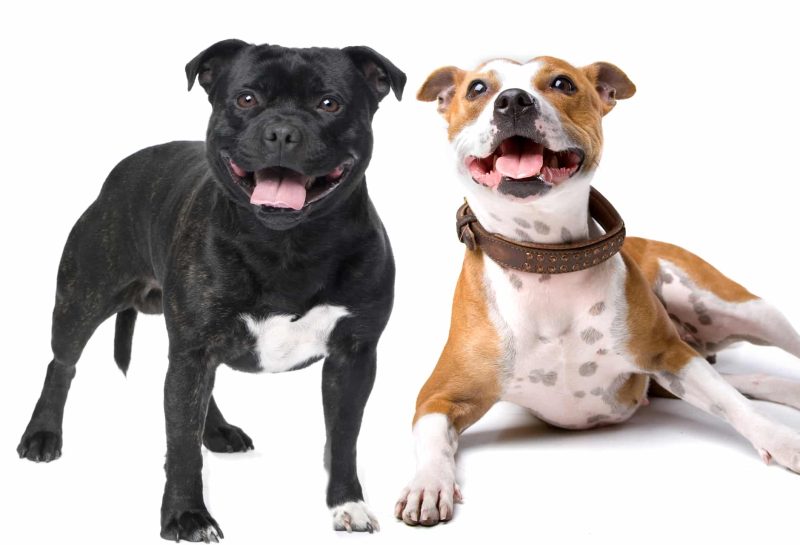

What’s the Difference Between the Alaskan Malamute & the Siberian Husky?
How to tell the difference between the Alaskan Malamute and the Siberian Husky, plus are these the breeds for you?
Though both the Siberian Husky and Alaskan Malamute are sled dogs through and through, there are breed differences between these friendly, thickly coated pack dogs, most notably size.
Siberian Huskies are smaller and lighter than their heftier cousin, the Alaskan Malamute. The Malamute is heavier boned and is an all-around more substantial, seriously strong dog. Both are pack animals of Arctic origin, but the more compact Husky is nimble, quick, and graceful, where the Malamute, a heavy-duty worker, is powerful, deep chested, and strong shouldered. Both have incredible endurance, but the Husky was developed for lighter loads. What they have in common: both of these loyal, friendly but dignified dogs love their families, need their exercise, and prefer cooler climes.
The Alaskan Malamute
Affectionate, loyal, playful
The Alaskan Malamute’s origin is as an Arctic sled dog, and it shows. This powerful, substantial, heavy-duty worker dog is immensely strong, weighing in at 75 to 85 pounds.
He’s heavy boned and possesses a thick, dense, weather-proof coat that is clean and generally odourless, but sheds a lot. Kind, intelligent almond-shaped brown eyes hint at the Malamute’s love for snuggling with the fam. That said, firm yet loving training is necessary, or your Mal will take charge. Is the Malamute for you? Be prepared to get your exercise—this energetic breed (moderate to high) definitely needs more than a stroll around the block. He’s also prone to chasing small animals and it’s best to socialize him to other dogs as he can be dominant. With his gentle, friendly, and playful spirit, though, he’s great with kids. Affectionate, loyal, and dignified, he makes a great companion for active owners who don’t mind a bit of dog hair.
The Siberian Husky
Loyal, friendly, mischievous
This medium-sized, graceful, compact sled dog should weigh no more than 60 pounds. Originally developed by the Chukchi people of Siberia, they were brought to Nome, Alaska, in 1908 for sled-dog racing. The Siberian Husky is a devoted family member (note this friendly breed makes an indifferent watchdog).
The Husky is thickly coated, though naturally clean, with little doggy odour—but sheds a lot. Unlike the brown-eyed Malamute, the Husky’s almond-shaped eyes can be either brown or blue—or sometimes one of each.
Quick and nimble-footed, Siberian Huskies are known for their powerful but seemingly effortless gait, notes the AKC.
Is the Husky for you? Not if your idea of a good time is a marathon Netflix session. The Husky is an energetic (read very active) breed prone to chasing small animals. Where kids are concerned, the Husky is better with supervision, though he gets along well with other dogs. If you’re active, this loyal, outgoing, mischievous, friendly, fastidious, and dignified dog may be the breed for you! (Read next: So You Think You Want a Husky? How to Tell if This is the Right Breed Match For You.)
At-a-Glance: The Key Differences Between the Alaskan Malamute and the Husky
The Alaskan Malamute and Siberian Husky are both strong, Arctic sled dogs, but they have distinct differences.
Size: The Alaskan Malamute is larger and more powerful, with males weighing between 85-100 pounds, compared to the Siberian Husky’s 45-60 pounds. Malamutes have a more solid, robust build suited for heavy pulling, while Huskies are leaner and built for speed.
Coat and Colour: Both breeds have thick, double coats, but Malamutes often have a more varied colour palette, including shades of grey, sable, and red. Huskies typically have a distinctive black-and-white or grey-and-white pattern.
Temperament: Malamutes are friendly, but more independent and sometimes aloof, requiring consistent training. Huskies are known for being friendly, outgoing, and sometimes more stubborn, making training a bit of a challenge.
Purpose: While both were bred for pulling sleds, Malamutes were used for heavy hauling over long distances, whereas Huskies were bred for speed in races and shorter hauls.
This article originally appeared in the award-winning Modern Dog magazine. Subscribe today!
Join the newsletter and never miss out on dog content again!
"*" indicates required fields
By clicking the arrow, you agree to our web Terms of Use and Privacy & Cookie Policy. Easy unsubscribe links are provided in every email.







